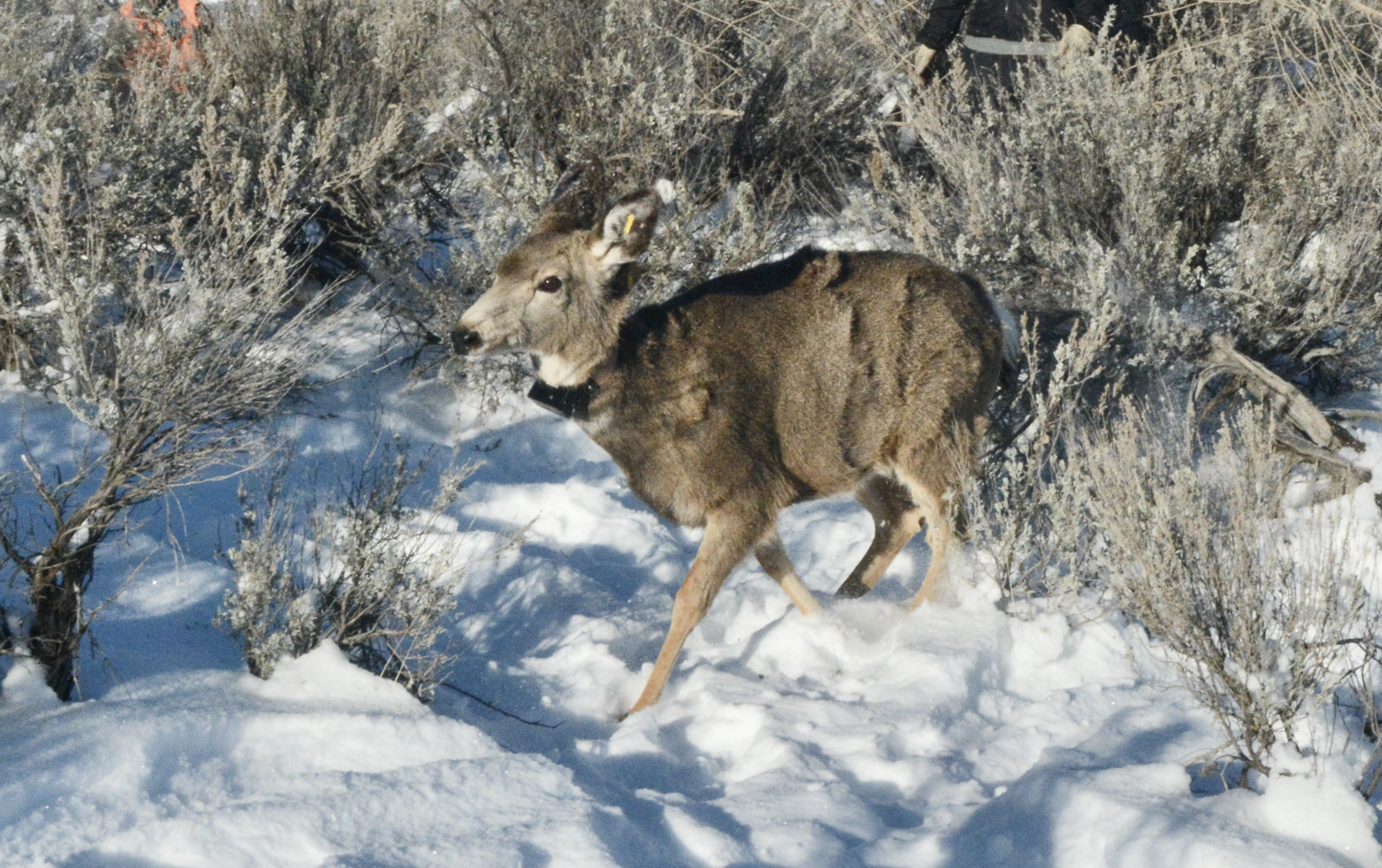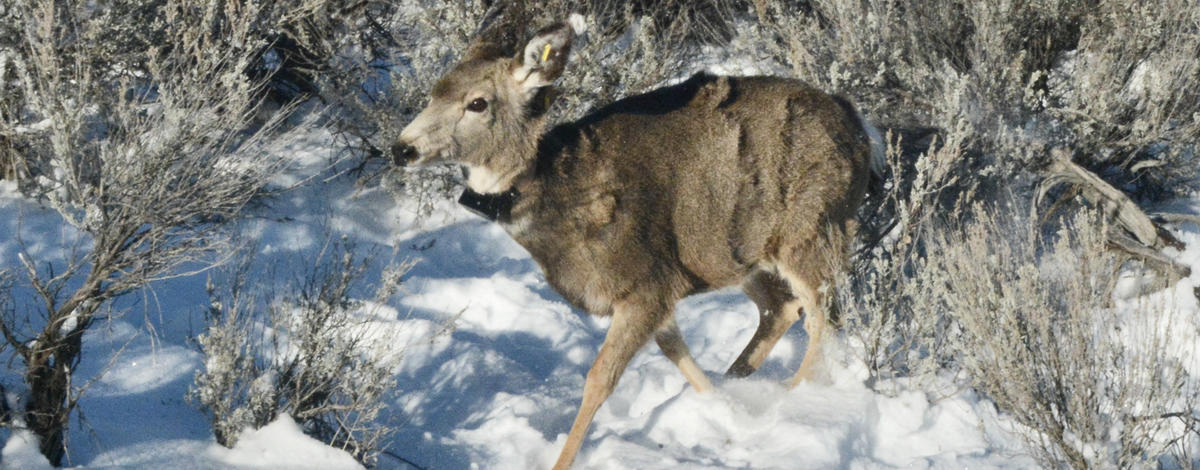Stifled by winter snowfall, the hustle and bustle of mountain rush hour creeps to a halt as wintering wildlife burrow in or migrate down. As the high-mountain snow piles up and pushes mule deer down to their wintering grounds, Fish and Game biologists don their thickest outer layers and take to the field.
Throughout December and early January, Fish and Game staff prepare for winter mule deer survival monitoring by using helicopters to capture and radio-collar 6-month old mule deer fawns. Game managers have a goal to capture and radio collar all fawns by Jan. 15, 2022.

“Completing deer fawn radio-collaring by Jan. 15 allows Fish and Game to accurately measure the effects of winter on fawn survival,” said Toby Boudreau, Idaho Fish and Game’s Deer and Elk Coordinator.
Mule deer are captured by net gunning from a helicopter, or using a helicopter to drive deer into capture nets. Capturing deer is vital for Fish and Game staff to manage and monitor animal populations. Idaho is separated into 15 mule deer data analysis units (DAU), and fawn survival estimates are conducted in seven of the 15 DAUs.
Fawns can determine long-term mule deer populations trends. In an average winter in Southern Idaho, about 60 percent of fawns survive, but in extreme winters, that survival can drop substantially, and game managers need to know if that occurs so they can adjust hunting seasons if needed.
It is a race against the clock during the coldest months to ensure an accurate and varied sampling of fawns taken from different parts of the state and different habitat types. By affixing mule deer with radio-collars, biologists are able to determine roughly how many of the fawns born last spring survive winter.
Although it does have its share of successes, monitoring localized deer captured with drive nets and helicopters has proven to be a limiting factor for the data. When drive net operations are set up on the landscape, with large fences set up between natural barriers like steep hillsides and shrubs, the sampled deer in that capture study represent only a small portion of the area at large. Imagine dipping a net in just one small tributary of a larger river, and then making assumptions for all the fish species in that whole watershed.
While a few drive-net capture operations still occur, Fish and Game biologists rely more on helicopter net gunning to put out radio collars. Capturing animals on a much larger geographic scale ensures a more representative sample, although the trade off is less support from volunteers.

Lending a hand
Prior to 2020 (and the rise of COVID-19), Fish and Game enlisted the help of staff as well as public volunteers to assist with the capturing of mule deer fawns in these drive net sets. After a crash course in deer tackling, volunteers would assist staff by holding and calming the deer while biologists took measurements and fitted them with radio-collars.
Since then, the department decided to use a more efficient approach to scatter the radio-collars across larger areas that better reflect the winter distribution of deer. The wider the distribution of collars the better survival data reflects the whole population. Interacting with the volunteers on this annual project has always been an exciting and enjoyable event for both staff and the public. The department greatly appreciates the efforts from the public in years past.
“We sincerely appreciate the public’s help over the past two decades to capture and radio-collar mule deer across southern Idaho and hope they understand that our transition to primarily net gunning for capture will provide better and more comprehensive data for mule deer management throughout the state,” Boudreau said.
Springing in the new year
Like many wildlife management efforts, monitoring studies take time. Upon completion of capture efforts, Fish and Game biologists will continue monitoring mule deer populations well into spring.
Biologists track the radio-collared deer via satellite collars equipped with GPS. These GPS collars are equipped with mortality sensors so that when the collar stops moving for a set period of time, it sends a signal to the satellite that alerts biologists that an animal has stopped moving. Fish and Game staff can then head to the field to determine how the animal may have died. Data acquired from the collars are compiled and analyzed on a regular basis.
For many of us, the dead of winter is spent staying warm on the couch, or maybe (just maybe) getting out on a river with a fly rod or hitting the woods in search of small game hunting opportunities. But for a handful of Fish and Game biologists, the long hours and backbreaking work of monitoring Idaho’s wintering wildlife is in full swing.

